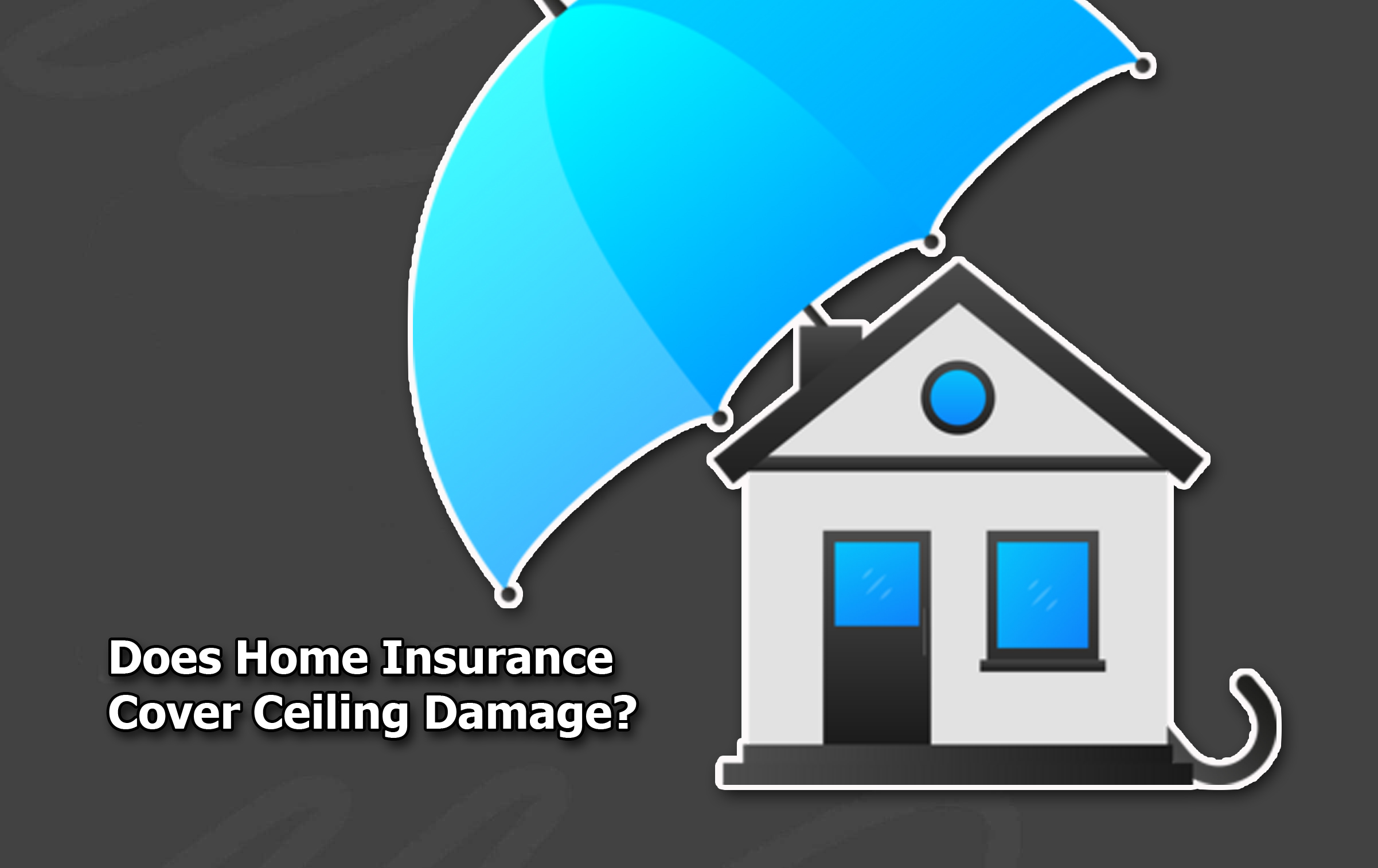
Does home insurance cover ceiling damage? Home insurance policies can be complex and confusing, leaving homeowners unsure about what’s covered and what’s not.

One common question is whether home insurance will cover ceiling damage, particularly if it’s caused by a roof leak or water issue.
But in the meantime, homeowners insurance is an important policy that could help safeguard your assets in case of accidents which might even include ceiling damage. Does it actually cover ceiling damage?
Hence, in this article, we’ll clarify the answer and provide a comprehensive overview of what’s usually included in home insurance policies related to ceiling damage. So, stick with us to be enlightened.
Does Home Insurance Cover Ceiling Damage?
Most home insurance policies cover ceiling damage caused by unexpected events. This includes structural problems, sudden water leaks, and accidents like fires or storms.
However, the level of coverage depends on your specific policy. Some policies may cover the full cost of repairs, while others may only provide partial coverage.
But to stay aware and know exactly what your insurance will pay for, it is important that you check your policy details or contact your insurer.
How Does Home Insurance Cover Ceiling Damage?
Insurance companies usually cover ceiling damage if it happens due to unforeseen events. Some of the most common causes include:
- Fire and smoke damage.
- Severe weather conditions like storms, heavy rain, or hail.
- Snow or ice buildup that causes leaks or collapse.
- Vandalism or intentional destruction.
- Explosions and other sudden accidents.
However, home insurance does not cover all types of ceiling damage. Homeowners must take care of their property to avoid preventable issues.
If damage happens due to poor maintenance, insurance companies may refuse to pay for repairs.
Types Of Ceiling Damage Covered by Home Insurance
Most policies cover ceiling damage caused by:
- Burst or frozen pipes
- Water damage from fire sprinklers
- Vandalism
- Plumbing failures
- Overflowing appliances
Types Of Ceiling Damage Not Covered by Home Insurance
While insurance covers many types of ceiling damage, it does not cover:
- Poor construction or low-quality materials
- Mold or fungus
- Foundation problems
- Earthquakes and floods
- Pest infestations
- Aging and wear and tear.
How Long It Take To Cover Ceiling Damage?
The time it takes to process a claim varies. Some claims may be settled within a few weeks, while complex cases can take several months. The timeline depends on factors such as:
- The severity of the damage.
- The insurance company’s claim process.
- The need for temporary repairs before a full settlement.
If the damage is minor, your claim could be processed quickly. However, if there are disputes over coverage, or if the insurer needs a detailed investigation, it may take longer to receive payment.
Is Ceiling Leak Damage Covered?
Ceiling leaks are covered if they happen unexpectedly. For example, if a pipe suddenly bursts and causes a leak, insurance will likely pay for the repairs.
However, insurance will not cover leaks caused by:
- Poor maintenance.
- An old or worn-out roof.
- Animal damage.
If your ceiling leaks because of a roof that hasn’t been maintained, your insurer may refuse your claim. Homeowners are responsible for regular inspections and upkeep to prevent leaks.
Does Home Insurance Cover Ceiling Collapse?
It depends on the reason for the collapse. If a sudden event like extreme weather or an accident causes your ceiling to collapse, insurance will likely cover it. However, if the collapse happens due to:
- Poor maintenance.
- An aging structure.
- Foundation issues.
Then, your insurer may deny your claim. Some policies specifically exclude ceiling collapses, so check your coverage details to know for sure.
Should You File A Claim For Ceiling Damage?
Before filing a claim, consider a few things:
- Check your deductible: Most homeowners have deductibles between $500 and $2,000. If the repair cost is close to or lower than your deductible, filing a claim may not be worth it.
- Consider premium increases: Filing a claim could raise your insurance rates for several years.
- Get multiple repair estimates: Compare repair costs before deciding if you should file a claim.
If the repair cost is high, filing a claim might make sense. But if it’s minor, paying out of pocket could be a better choice.
Final Thoughts
Knowing what your home insurance policy covers helps you maintain your home and prepare for unexpected issues like ceiling damage. To stay informed and up to date on your coverage, reach out to your insurer for guidance.